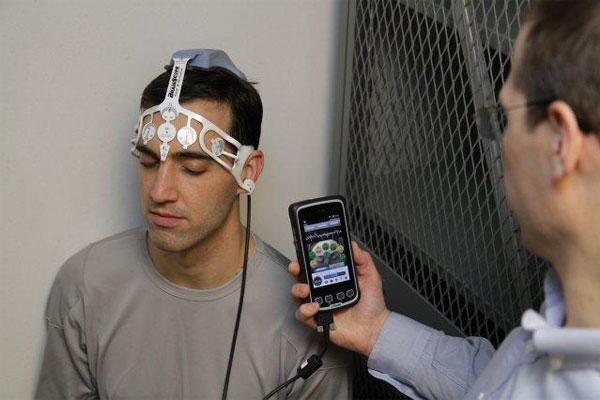A Congressional Research Service report on casualties of the Iraq and Afghanistan wars notes how many died, were wounded, suffered major amputations or were diagnosed with post-traumatic stress disorder.
But the document is unable to say how many of the roughly 305,000 people who incurred a traumatic brain injury over the last 14 years suffered the damage in the combat theater.
"Unlike PTSD numbers, which are segmented by those deployed and those not previously deployed, TBI numbers represent medical diagnoses of TBI that occurred anywhere U.S. forces are located, including the continental United States," it states.
The report is more specific in other casualty areas, stating that 6,855 Americans -- military and civilian -- died and 52,351 were wounded in the Iraq and Afghanistan wars through July 28.
What's more, 1,645 personnel suffered at least one major limb amputation from the start of the wars through June 1, 2015, including 833 in Afghanistan and 812 in Iraq.
From the start of the wars until the first part of 2015, some 138,000 deployed personnel were diagnosed with PTSD, a figure three times the roughly 39,000 non-deployed troops diagnosed with it in the same period.
The report doesn't explain why the TBI numbers are lumped together. Military.com was unable to reach a spokesman for the Maryland-based Defense and Veterans Brain Injury Center, which tracks the data, for comment.
According to the center, fewer than 80 percent of TBI cases occur during a deployment.
"TBI is not uncommon even in garrison and can occur during usual daily activities," the center states on its website. "Service members ... ride motorcycles, climb mountains and parachute from planes for recreation. In addition, physical training is an integral part of the active duty service member's everyday life. These activities are expected for our service members and contribute to a positive quality of life; but these activities also can increase risk for TBI."
In a statement last year, the center's national director, Army Col. Sidney Hinds, said the majority of TBIs in the military "are related to vehicle crashes, falls or sports injuries."
Though the data is short on where the TBIs occurred, it does indicate that the vast majority of the injuries fall into the "mild" category.
For example, of the nearly 33,000 cases diagnosed in 2011 -- a particularly high year for TBI incidents -- about 25,000 were deemed mild, meaning the person lost consciousness for up to 30 minutes, experienced confusion or disorientation lasting less than 24 hours, memory loss lasting less than 24 hours, and structural brain imaging that yields normal results, according to CRS.
Another 2,600 were "not classifiable" -- meaning additional information about the incident would be needed before a TBI categorization could be given.
Just over 2,000 were diagnosed with moderate TBI, in which the confused or disoriented state lasts longer than 24 hours, unconsciousness lasts more than 30 minutes but less than 24 hours, and memory loss runs more than day but less than a week. In moderate cases, brain imaging can show normal or abnormal results.
In that same year, 2011, 787 service members were diagnosed with penetrating or severe TBI. Here the characteristic are the same as for the other categories but they last longer. A penetrating TBI means the outer membrane of the brain and spinal column has been pierced.
-- Bryant Jordan can be reached at bryant.jordan@military.com.





























